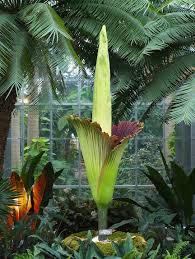
The Best Garden Hose on the Market: A Comprehensive Guide
If you have a garden, then you know that a good hose is essential. But with so many different hoses on the market, it can be hard to know which one is right for you. This guide will help you understand the different types of hoses available, as well as the pros and cons of each type, so that you can make an informed decision about which hose is best for your needs.
Types of Garden Hoses
There are four main types of garden hoses: vinyl, rubber, metal, and soaker. Each type has its own advantages and disadvantages. Here is a brief overview of each type:
Vinyl Hoses
Vinyl hoses are the most common type of hose. They are lightweight and easy to maneuver, making them a good choice for small gardens. However, they are not as durable as other types of hoses and can be easily punctured. They are also not suitable for hot weather because the heat can cause the vinyl to crack.
Rubber Hoses
Rubber hoses are more durable than vinyl hoses and can withstand higher temperatures without cracking. However, they are heavier than vinyl hoses and can be difficult to maneuver. They are also more expensive than vinyl hoses.
Metal Hoses
Metal hoses are the most durable type of hose, but they are also the heaviest and most difficult to maneuver. They are also not suitable for hot weather because the heat can cause the metal to expand and burst the hose.
Soaker Hoses
Soaker hoses are made of porous material that allows water to seep through it slowly. They are ideal for watering large areas or gardens with delicate plants because you can control the amount of water that is released. However, they can be difficult to store and take longer to water your garden than other types of hoses.
The best garden hose for you depends on your individual needs and preferences. If you have a small garden and want a lightweight hose that is easy to maneuver, then a vinyl hose would be a good choice. If you have a large garden or need a hose that can withstand high temperatures, then a rubber hose would be a better option. If you need a durable hose that can handle any kind of weather, then a metal hose would be the best choice. And if you need a hose that can release water slowly and evenly, then a soaker hose would be your best bet. No matter what type of garden hose you choose, make sure it is durable and easy to use so that watering your garden is always a pleasure!
What is the best garden hose on the market?
- Best Overall: Flexzilla Zillagreen Garden Hose at Amazon.
- Best Expandable: J&B XpandaHose at Amazon.
- Best Lightweight: TheFitLife Flexible and Expandable Garden Hose at Amazon.
- Best Heavy-Duty: Bionic Steel Garden Hose at Amazon.
- Best Rubber:
- Best 100-Foot:
- Best Soaker:
What is the most durable type of garden hose? Rubber garden hoses are generally the most durable and versatile but can cost more, such as $50+ for a 50-foot hose. A rubber hose resists kinking and cracking, but it’s also a bit heavier, especially when filled with water.
What is the best hose that does not kink? Grace Green Hybrid 5/8 in.
The flexible Grace Green Garden hose is kink resistant and remains supple in cooler temperatures. I tested that premise outdoors when the temperature was just 43 degrees Fahrenheit, and it’s true—Grace Green was flexible enough to easily loop around the base of a flagpole without kinking.
Is rubber or vinyl better for garden hose? Vinyl hoses aren’t as durable as rubber hoses. A rubber garden hose is more expensive. They’re tougher, more flexible and heavier than vinyl hoses. Overall, rubber hoses are more durable.